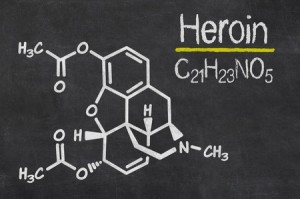A Double-Edged Drug

Dee Roberts referred to Suboxone (buprenorphine) maintenance as “withdrawal avoidance” while describing her journey from Vicodin to Suboxone to tapering off of Suboxone. The truth of the statement stung. She said she developed a “deeply rooted” fear of not having the medication with her. Does that sound familiar? Tellingly she said: “My behavior on Suboxone and while using had some alarming similarities.”
In “Kicking Suboxone: The Last Milligram” she described her efforts to break free from what had initially promised her freedom from the Vicodin-vodka cocktail that had stopped working for her. She said she was one of the first to try Suboxone when it became available in 2003. But “not one doctor who saw me suggested I consider going off of the drug. I stayed on it for 10 years until the side effects added up, motivating me to make the final jump.” She spent over $50,000 dollars out of pocket on doctor’s visits and drug co-pays.
If it weren’t for an adrenal imbalance that developed, she thinks she might well have continued taking it for many more years. But that wasn’t her only adverse effect. After a couple of years, she noticed personality changes. She felt like she was watching someone else’s story unfold. She wasn’t able to put words to the experience at the time. “The fighter in me had retired without notice.” She developed a skewed appetite, going from sugar fix to sugar fix. The final straw was when she noticed her hair falling out.
She tried several consultations before she found a doctor willing to help her taper off of buprenorphine (Suboxone). “As if waving a voodoo doll, I was warned multiple times about tempting relapse.” It had been 11 years since her last illicit prescription. She said she found it difficult to separate real withdrawal symptoms from psychosomatic ones in her tapering process. I’d suggest that a better distinction would be between acute withdrawal symptoms (her sense of “real” withdrawal symptoms) and post acute withdrawal symptoms (what she called psychosomatic ones).
Dee’s journey is described in more detail in her original article for The Fix. It involved off-and-on sleep deprivation, bouts of depression, stomach pains, hot and cold flashes, an emotional rollercoaster ride, and the help of a Border Collie mix who became her personal trainer. She had to find her own way out of her withdrawal avoidance disorder, “Since there have been no long-term use studies on Suboxone, side effects are often downplayed or ignored by the medical community.” She referenced a doctor in Boca Raton Florida, Steven Scanlon MD, who wrote a helpful article on “Detoxing from Suboxone.” He said:
Patients, the first question you need to ask your current Suboxone doctor is whether he has ever taken anyone completely off Suboxone or Subutex. If he says that he just tapers a patient down after they have been on it long-term and they are fine, then he is disingenuous or at least ill-informed. If he tells you that he is going to put you on 16mg sublingually for six months while your brain stabilizes and heals and then taper you off it he is purposely or unknowingly misleading you. How can your brain heal if you are still taking an extremely potent opioid that is classified as a pain medication and approved by the FDA as a medication to treat severe pain? On the other hand, if he tells you about the symptoms I discuss below and has previously helped people get off Suboxone when they are ready, then stick with this doctor and do what he says. When I detox patients off Suboxone I follow them for approximately 5 or 6 months and see them once a week during that time. I make sure to follow them for at least two months after we stop the Subutex. I do not use Suboxone, only Subutex, and I will explain why not.
Dawn Roberts suggested that to get a sense of the scope of the problem with recovering addicts who are desperate to get off of Suboxone, type “get off Suboxone” into a search engine. I found over 16,000 results. Then I tried “Suboxone taper” and had over 8,000 results. “Suboxone withdrawal tips” garnered 47,900 results. “Suboxone withdrawal help” had 184,000 hits; and “Suboxone withdrawal symptoms” had 410,000 hits. Writing for The Fix, Roberts investigated why there was no official protocol to detox addicts off Suboxone in “So You Thought You Could Get Off Suboxone?”
She provided a brief history of the process that Reckitt Benckiser Pharmaceuticals (RBP) used to bring Suboxone to market and turn it into a blockbuster drug. They spent ten years and millions of dollars to cultivate the buprenorphine formula and another 13 years to bring Suboxone to the market in 2002. They lobbied Congress to create the Drug Addiction and Treatment Act of 2002 (DATA). Then RBP worked with NIDA and the FDA to lay the foundation to introduce Suboxone to the market. Their efforts garnered RBP $1.23 billion in sales in 2011 and $1.35 billion in sales in 2012. According to RBP’s annual report, Suboxone sales were $1.2 billion in 2013, ranking it at #39 of the top 100 drugs prescribed in the US. Oh, and Genetic Engineering & Biotechnology News ranked Suboxone as the most abused drug of 2014. Zubsolve, another buprenorphine/naloxone product, was ranked as the 12th most abused drug that same year. Note also that the DEA classifies these drugs as Schedule III controlled substances.
Roberts then related how Reckitt Benckiser told her they were not aware of an established guideline or protocol for titration (tapering) off of Suboxone. A RBP spokesperson said:
Patients seeking to discontinue treatment for opioid dependence should be advised to work closely with their healthcare provider on a tapering schedule and should be apprised of the potential to relapse to illicit drug use associated with discontinuation of opioid agonist/partial agonist medication-assisted treatment.
Roberts concluded that RBP outright refuses to study the long-term effects of buprenorphine maintenance. And it seemed that the company was intolerant of buprenorphine patients who decide they want to discontinue Suboxone substitution treatment. I’m beginning to hear a line from the Eagles song, “Hotel California” in my head: “You can check-out any time you like, but you can never leave.”
Guinevere, on Guinevere Gets Sober, a great recovery blog, came to the same conclusion. In “Suboxone Detox Redux,” she noted that Tim Baxter, the global medical director for RBP, told her: ”We don’t promote detox” from Suboxone. She decided RBP wants you to stay on the drug. Guinevere also recommends Dr. Scanlon’s paper, “Detoxing from Suboxone.” Read her article for good advice if you are considering any attempt to taper or titrate off of buprenorphine.
It seems that RBP has been trying to build a clientele that will continue using their Suboxone products for extended periods of time. Here is an article describing in some detail the gamesmanship of RBP over the years that Suboxone was under patent. RBP lost their exclusivity rights to Suboxone in 2009. However, they submitted a New Drug Application to the FDA for a sublingual film version of Suboxone in October of 2008. It was approved in August of 2010 with patent exclusivity until 2023. In their 2011 annual report, RBP said that competition from generics could take up to 80% of the revenue and profit of the Suboxone tablet business in the US. But they expected “that the Suboxone film will help mitigate the impact.”
Then in September of 2012, RBP announced that they were voluntarily withdrawing the tablet form of Suboxone from the market, citing data they had received from the US Poison Control Centers indicating high rates of pediatric overdose on the tablet formulation. But they were manipulating the market by offering discounts on the sublingual film version while raising the price of the tablets. Hours after announcing their plan to take the tablets off the market, RBP announced they had filed a “citizen’s petition” urging the FDA to require all manufacturers of buprenorphine-containing products to implement safeguards to prevent pediatric exposure, etc. They also asked the FDA to reject any new drug applications for buprenorphine (generic Suboxone) tablets. The FDA didn’t bite and approved generic tablet versions of Suboxone. Janet Woodstock, the Director of the FDA Center for Drug Evaluation and Research, said:
The timing of Reckitt’s September 2012 announcement that it would discontinue marketing of the tablet product because of pediatric exposure issues, given its close alignment with the period in which generic competition for this product was expected to begin, cannot be ignored.
Writing for The New York Times, Deborah Sontang published two articles on the pros and cons of Suboxone: “Addiction Treatment With a Dark Side” and “At Clinics, Tumultuous Lives and Turbulent Care.” The doctor running a clinic near Pittsburgh was quoted as saying, “I know on the surface it might look like a pill mill. . . . We’re seeing a fair number of patients, and they’re primarily receiving a prescription.” But he added they encourage, support and don’t judge. “There’s a kind of love.” Read the article to get a clearer picture of his bedside manner. After his “recovery” and entrance into the Suboxone clinic business, Ohio revoked his medical license in 2011 because he had forged signatures verifying his attendance at 12-Step meetings. Pennsylvania suspended his license in 2010 for failing to submit to three unannounced drug tests while he was on vacation.
So getting on Suboxone maintenance is like checking into the Hotel California:
Last thing I remember, I was
Running for the door
I had to find the passage back
To the place I was before
“Relax, ” said the night man,
“We are programmed to receive.
You can check-out any time you like,
But you can never leave!
If you want to hear the entire Eagles song, listen here.
IRETA, the Institute for Research, Education & Training in Addiction, seemed to disparage Sontang’s portrayal of buprenorphine as a “double-edged” drug. They concluded their reflections with the following: “Singling out buprenorphine as ‘the’ double edged drug seems an inaccurate and potentially stigmatizing view of it.” I’m not buying their rhetoric. From what I’ve seen, buprenorphine really IS a double-edged drug.

